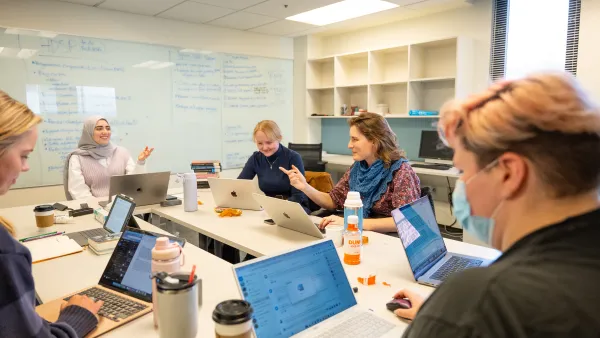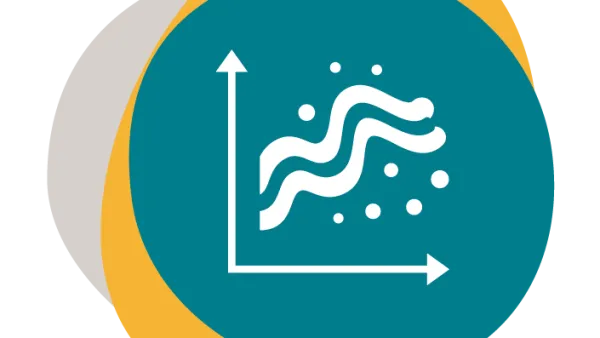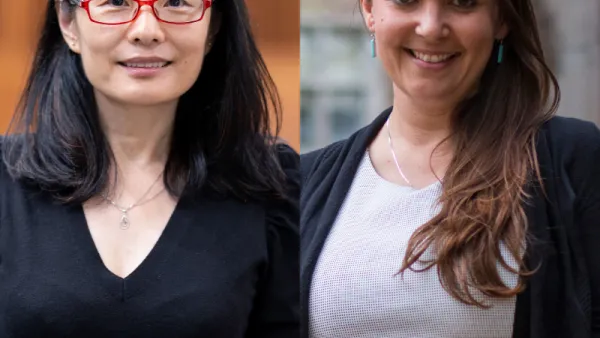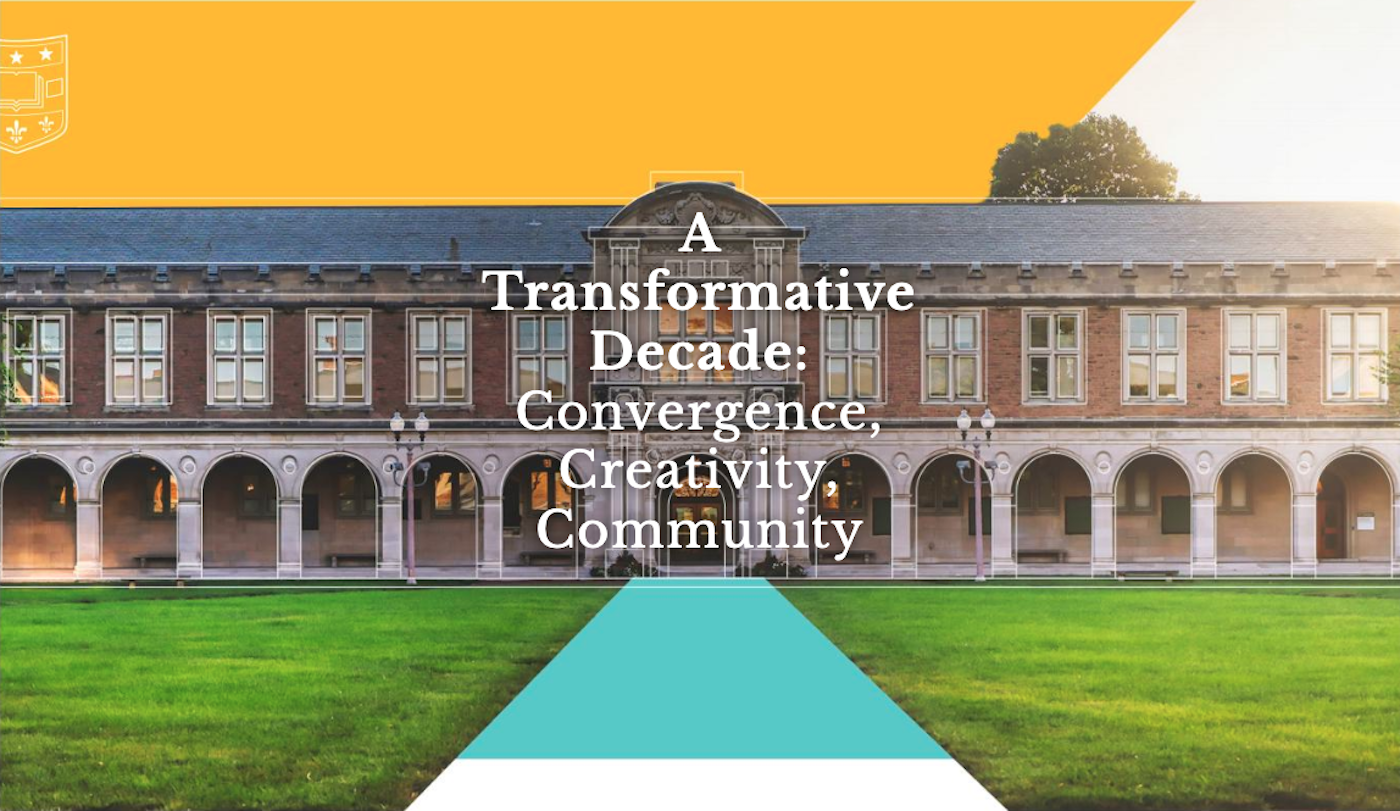
Dozens of faculty members and staff involved in implementing the Arts & Sciences Strategic Plan gathered at the Danforth University Center in early May for a day of discussion, inspiration, and reflection on the first year of their efforts.
The half-day event allowed key stakeholders to learn how the plan’s eight signature initiatives, six strategic pillars, and four foundational areas have progressed over the last 12 months, with the goal of planting seeds for future collaboration and innovation.
“With so much happening in our implementation of the Strategic Plan — with so many groups and so many individuals working on their pieces of it — we haven’t had the chance for everyone to come together,” Ebba Segerberg, Strategic Plan co-chair and associate dean of Arts & Sciences, said at the start of the forum. “We have an opportunity, looking from a high level, to see new connections that we may have missed when we were in the weeds.”
Over the course of a dozen presentations and discussions, that’s exactly what happened as faculty identified new opportunities for collaboration, creativity, and community building. Feng Sheng Hu, dean of Arts & Sciences, told the group he was excited by their progress and the ambitious work to come.
“It’s amazing,” Hu said. “We’re one year into the 10-year plan, and we’ve come so far. Just imagine where we’ll be in 10 years.”
Here are three key takeaways from the forum:
1. Arts & Sciences drives Washington University.

To kick off the forum, Hu asked attendees to think about inflection points — those critical moments when an institution can seize the opportunity to redefine its future or stagnate and become obsolete.
“I think we are at another inflection point now in the history of the institution,” Hu said. “We need to invest in Arts & Sciences and lift our core departments to the next level.”
Arts & Sciences is the “heart and soul” of the university, Hu said. The College’s expansive curriculum touches every undergraduate student at WashU, and the school’s footprint stretches the entire Danforth Campus. When Arts & Sciences delivers on its ambitious Strategic Plan, it will propel the entire university forward, Hu said.
2. The future is transdisciplinary.
A signature initiative of the Strategic Plan, the Incubator for Transdisciplinary Futures (ITF) functions as a fertile ground for cross-department collaboration. This year, 14 projects received funding for transdisciplinary work spearheaded by a wide array of academic experts from Arts & Sciences and beyond.
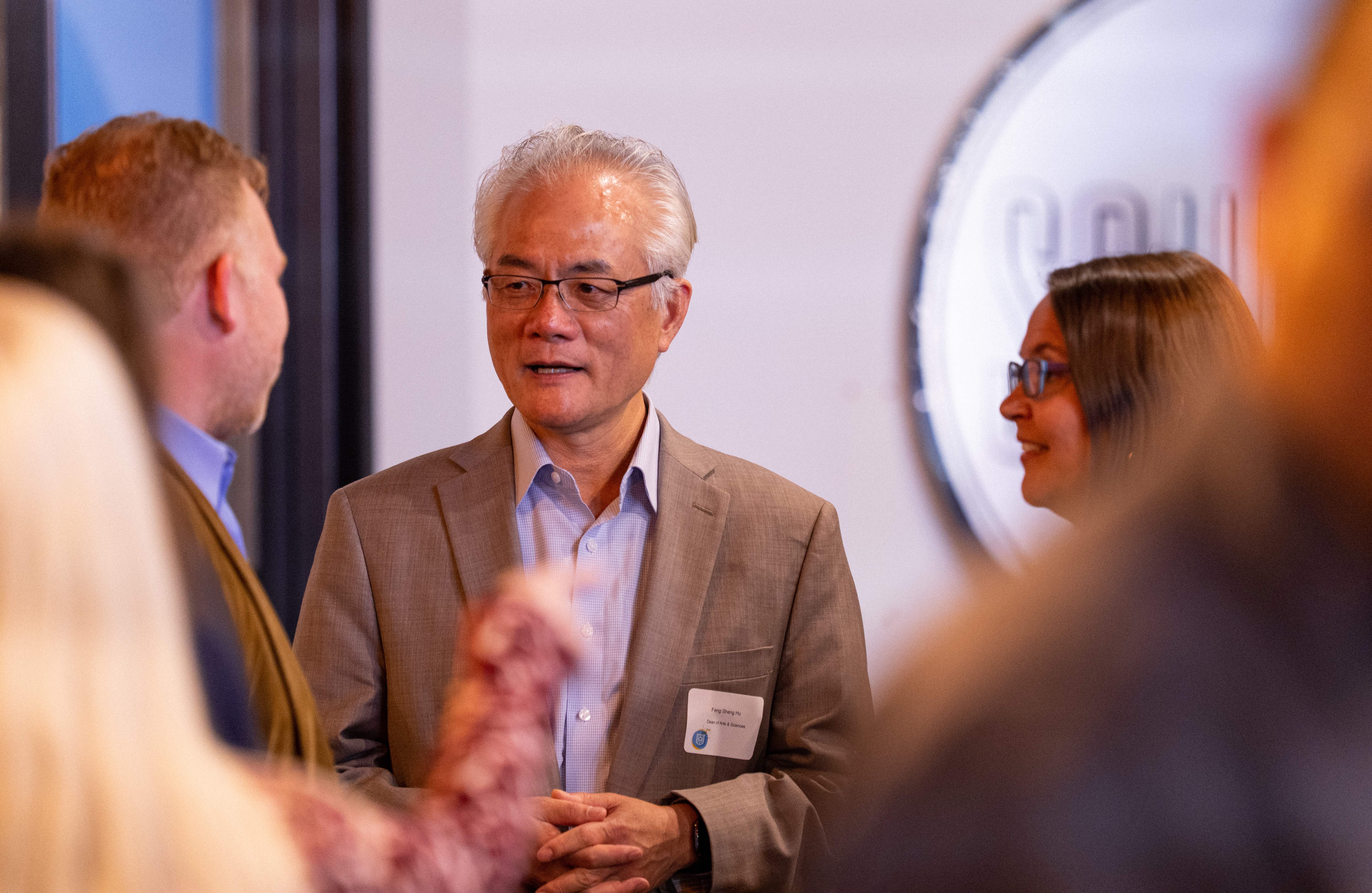
Feng Sheng Hu, dean of Arts & Sciences, at the TRIADS seed grant celebration.
The “Mindfulness Science & Practice” cluster, for example, features faculty from the Arts & Sciences departments of psychological and brain sciences and philosophy, along with the Brown School of Social Work and the Olin Business School. Each team member brings a unique perspective to the project, allowing them to explore mindfulness from different angles.
“We see our role as supercharging wild collaborations,” ITF co-director William Acree said. “Ninety percent of our teams consist of people who have never worked together previously.”
It’s possible these relationships will endure beyond the duration of the ITF projects and “create frameworks for the university of the future,” he said.
Similar collaborations are underway as part of the Transdisciplinary Institute in Applied Data Sciences (TRIADS) signature initiative, which creates unexpected pairings of WashU faculty to tackle pressing social challenges. The partnerships often push faculty members beyond the boundaries of their own disciplinary expertise, said TRIADS co-director Jacob Montgomery. “We’re asking them to take a chance and leave their department to work on questions they’ve never really worked on before.”
3. Community is key.
Community building has been pivotal in the early stages of the plan’s signature initiatives, which aim to build Arts & Sciences into a nationally recognized leader in numerous fields.
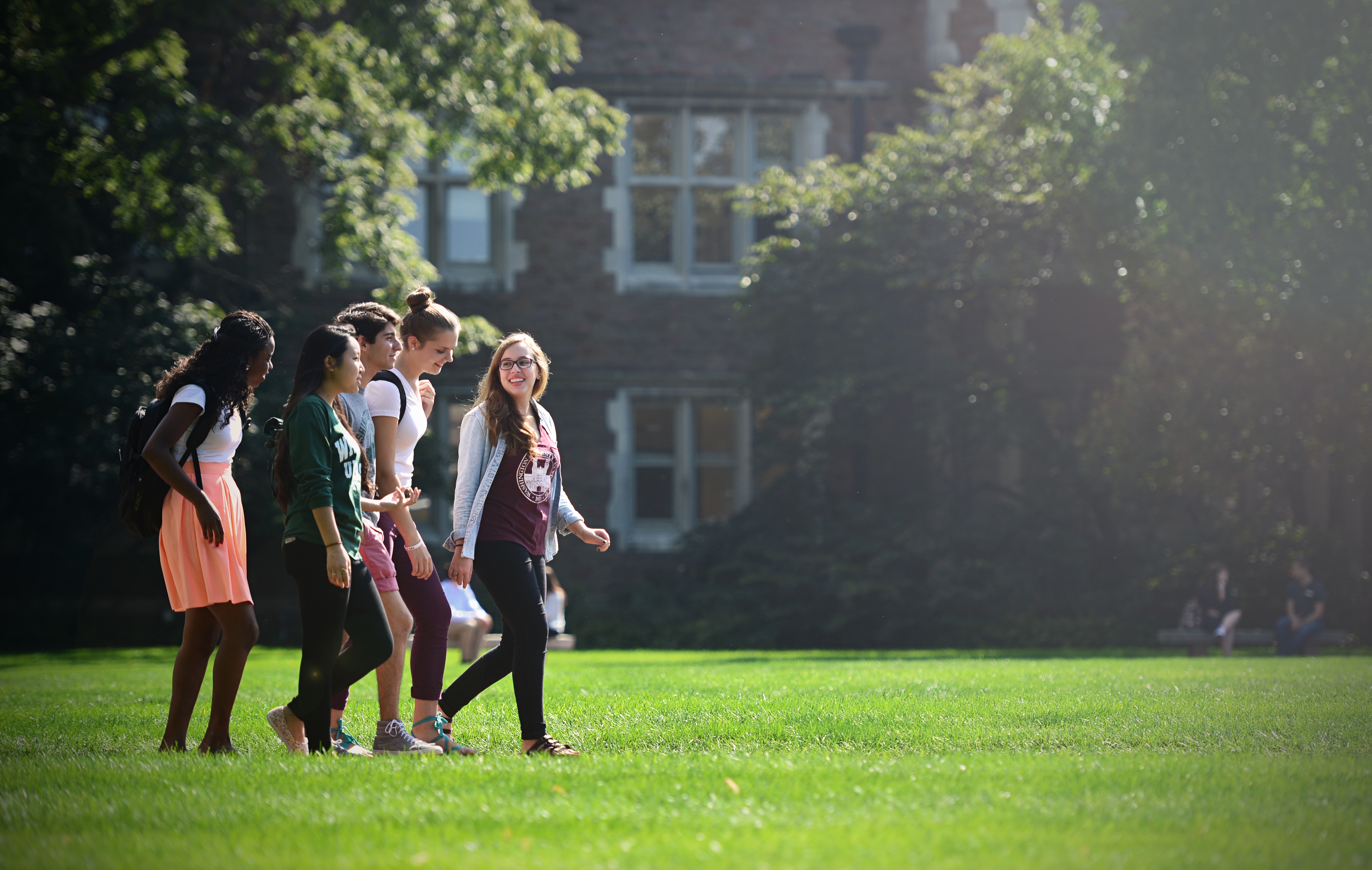
The Center for the Literary Arts, for example, drew 130 students and faculty from 21 different departments for a campus visit from prize-winning author Anna Moschovakis and her agent Akin Akinwumi. The event’s popularity highlighted the value of bringing a range of creative professionals and experts to campus.
“We saw this as a professionalizing event,” Danielle Dutton, the center’s co-director, said. “It was not just about being a writer, but how to live as a writer outside of the classroom.”
Montgomery also highlighted the communal focus of a TRIADS seed grant project that will examine the local health impacts of endemic flooding in Cahokia Heights, Illinois
“They’re using advanced tools, but the underlying question is not only about this community, but about climate change,” Montgomery said. “As flooding increases, how might that be felt across different communities in the United States and around the world?”
Many of these lessons and themes will continue to inform the Strategic Plan as it enters its second year. The convergence of diverse intellectual communities, for instance, is at the heart of Arts & Sciences. “We are changing the intellectual landscape of the entire university in really profound ways,” Hu said.

